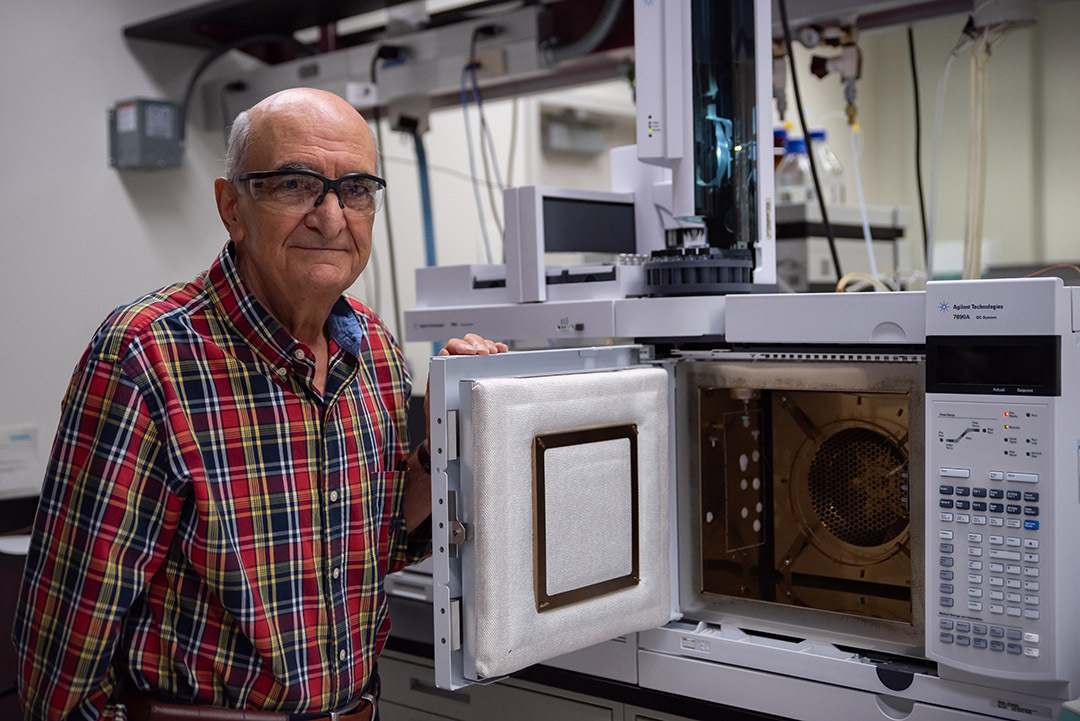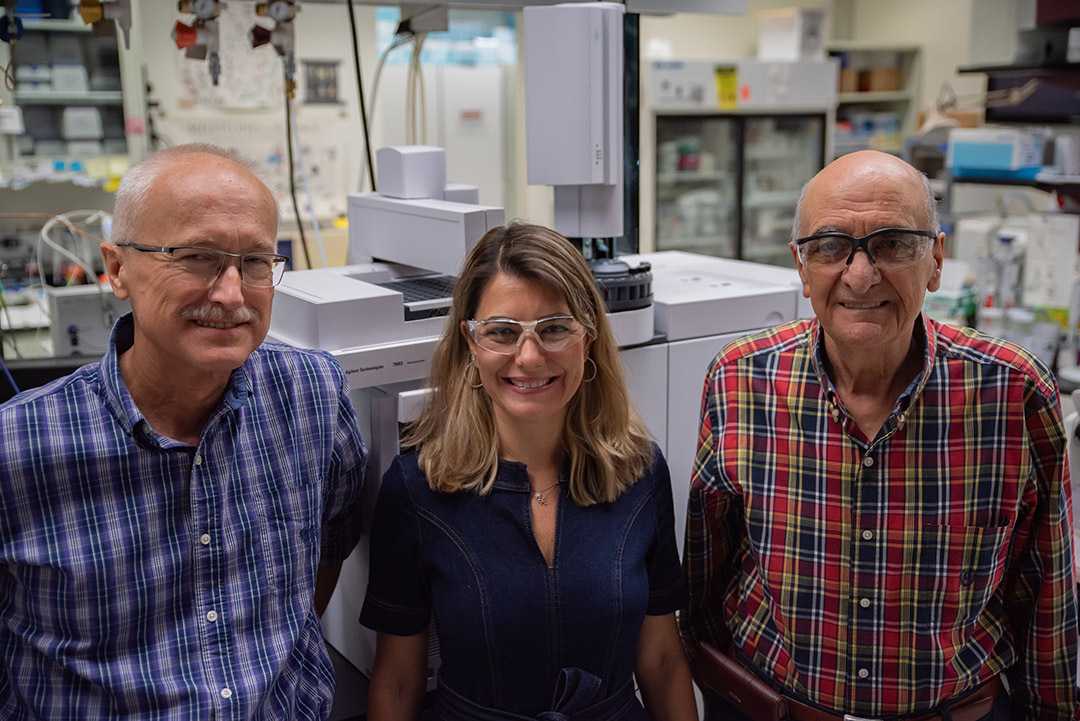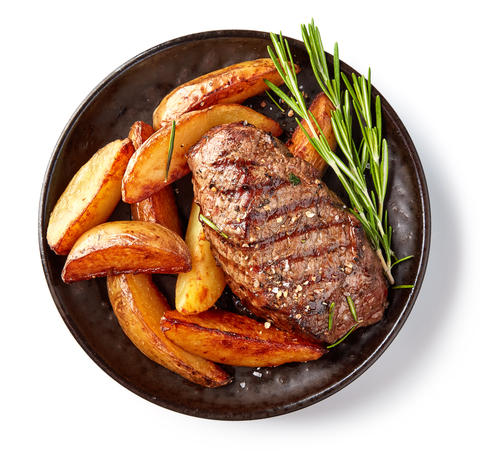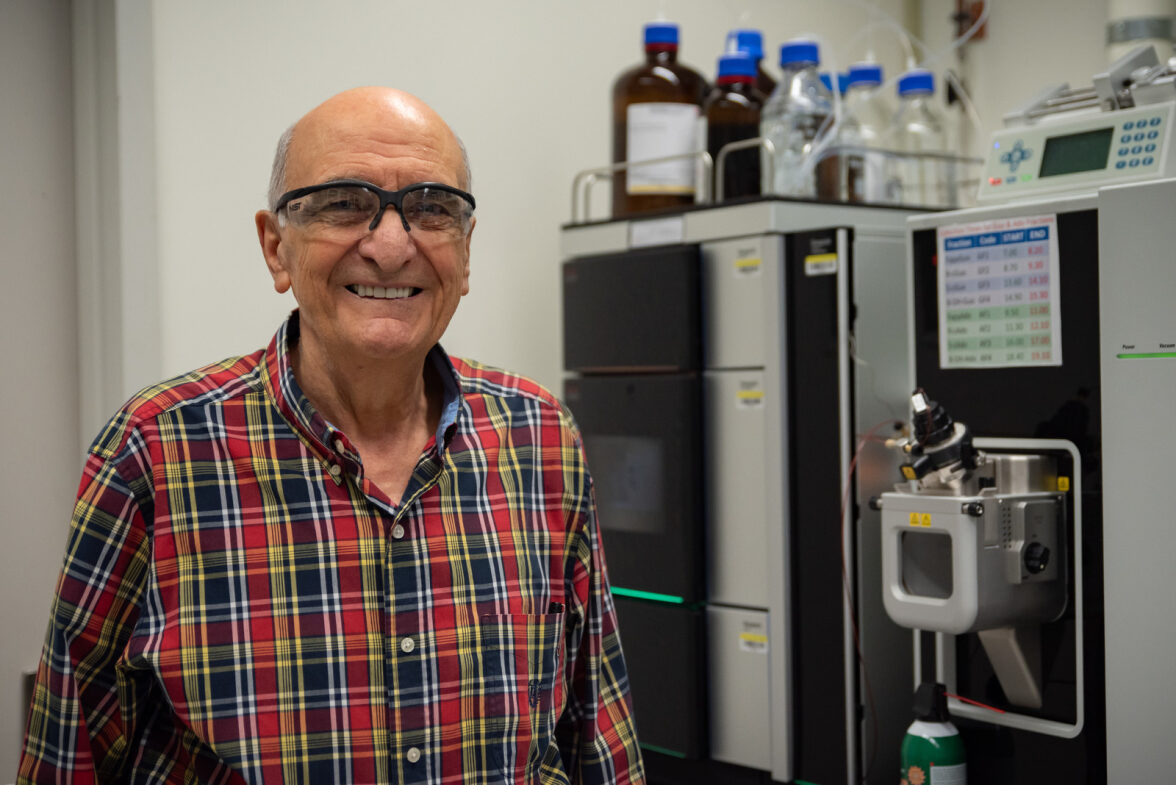Taking Measure
Just a Standard Blog
How We Studied DNA Damage in Cooked Food — and What It Might Mean for Our Health

When you eat plants or meat, you’re also eating a tiny amount of that plant or animal’s DNA.
But what happens to that plant or animal DNA when you cook the food before eating it?
My team and I were recently part of a collaboration with researchers at Stanford University led by Professor Eric T. Kool, trying to answer this challenging scientific and measurement question.
To put it simply, when you cook food, especially at higher temperatures, a small portion of that food’s DNA becomes damaged. When damaged DNA enters a living organism, part of that damaged DNA can be incorporated into that organism’s genetic material. Think of it as sneaky intruder DNA.
While we don’t know yet if this will translate to humans, these results are concerning, even though it’s a tiny amount of DNA that’s actually damaged. This damaged DNA could lead to genetic outcomes that could raise the risk of cancer and other health conditions. We’re interested in learning more about how damaged DNA could become incorporated into human bodies’ DNA when we eat cooked foods.
How We Studied Damaged DNA in Food
First, Professor Kool’s team boiled or roasted ground beef, ground pork and potatoes. DNA was isolated from heat-processed foods, as well as from uncooked controls.
Then, Professor Kool’s team fed heat-damaged DNA components to mice via a solution, and this damage is similar to the type of damage in DNA from cooking food at high temperatures. The researchers showed that DNA damage appeared in the small intestine of the exposed mice, where most food digestion occurs. They also isolated DNA from small and large intestines of mice for study.

The Stanford team also exposed lab-grown human cells to the damaged DNA to see if they got similar results. They found that the lab-grown human cells also showed DNA damage. This happened because the DNA in the human cells incorporated damaged DNA components.
Professor Kool’s team sent the DNA samples isolated from control and cooked foods and from intestines of mice to our lab here at NIST for analysis and measurement.
First, we checked the DNA to make sure it was free of impurities that would impact our results.
Then, we applied our longstanding DNA study methodologies and standards developed at NIST. Our team divided the DNA down to tiny samples, weighing 50 micrograms. One gram is about the weight of a paper clip. So, one microgram is about a millionth of a paper clip!
We then broke the molecule apart using specific enzymes to allow us to study the DNA damage. DNA has four bases that are the units of DNA and store genetic information. These are often called the letters of DNA, namely A, C, T and G.
Using a tool to measure molecules known as mass spectrometry, we identified and measured damaged DNA bases. Our results showed that cooked food underwent extensive DNA damage depending on cooking temperature. The damage was worse at higher cooking temperatures. DNA damage appeared prominently in the small intestine of the exposed mice, confirming the results obtained in Kool’s lab using a different methodology.
What This Means for Our Diets
You may consume up to a gram of DNA from vegetables or meats in a meal, though the exact amount varies depending on the type of meat or vegetable and how much you eat. A 500-gram (16-ounce) steak contains about a gram (or 0.04 ounces) of DNA.

While we don’t know the exact percentage of how much of the DNA in your food is damaged from cooking, especially at high temperatures, we did find that only a handful of DNA bases out of millions were damaged in the cooking process.
This study should not cause alarm, though we certainly need to study this further. We still need to cook many foods to be able to eat them safely (or for them to simply taste good).
The main takeaway from our study is: Don’t burn your food. The most damage to DNA comes from very high-temperature cooking.
I haven’t changed my own diet since I worked on this study. I still enjoy cooked food; I just make sure it’s cooked at an appropriate temperature so as not to do too much damage to the food’s DNA.
Another important consideration in putting this research in context is that even if your DNA gets some damage from food cooked at high temperatures, the body has amazing rebuilding mechanisms that are constantly repairing your DNA. In fact, without DNA repair, there would be no life on our planet. Since humans began to evolve, human DNA has constantly been damaged and repaired.
More Than Four Decades of DNA Research
I’m originally from Turkey, and I started out as a chemical engineer. During my doctoral and postdoctoral work in Germany, I began working on DNA research.
I’ve been studying DNA damage since shortly after I started working at NIST in 1986. In the earlier days of NIST, we weren’t studying anything related to biotech, and many of these questions and areas of study weren’t seen as measurement science.

But that changed as biotechnology started becoming a bigger part of science and industry in the 1990s, and scientists began to learn the level of measurement science needed in this field. NIST began developing measurement methods and standards to improve measurement in biology, including in the area of DNA damage and repair.
Ever since, I have enjoyed this research, so much so that I’m not sure when I plan to retire, even after doing this work for more than four decades! DNA is so fascinating because it’s a molecule of life. There are always more studies to be done and more to learn.
I love my work, and it’s such an important part of my life. Every day, I come to work and enjoy what I do, working with talented people at NIST and other institutions.
Ongoing Research on Food Safety and DNA Is Needed
While this study was an important step forward in understanding how damaged DNA affects mice and cultured human cells, there’s much more to be studied before we can fully understand the implications.
In this study, we worked with potatoes and meat that were boiled and roasted. Our collaborators at Stanford University and our team are already making plans to continue studying more vegetables and meats. While we don’t yet know how these results will translate to human DNA, we plan to keep studying foods that people commonly eat and to see the results in mice.
Ongoing research will be needed to help people understand the risks associated with damaged DNA and make the best dietary decisions for themselves and their families.
In my lab at NIST and in many others, we will continue to study DNA damage and repair to help us all protect our health.
Note: All experimental procedures in this study followed protocols approved by Stanford University’s Institutional Animal Care and Use Committee.
About the author
Related Posts
Comments
Define overcooked other wise this info doesn't help me
Hi, Ron. This is addressed in the research paper - https://pubs.acs.org/doi/10.1021/acscentsci.2c01247, but according to the researcher, it generally means cooking food to the point of burning.
Thank you for sharing your research. Did you find any difference in the amount of damage from plant DNA vs Animal DNA? Did you find any difference in the amount of damage from nuclear DNA vs mitochondrial or chloroplast DNA?
Where can I read more about your research on DNA damage in food?
Thanks for your comments. Yes, there was less DNA damage in potatoes than in ground beef and ground pork, suggesting that other components of plant tissues may confer substantial protection. DNA was isolated as a whole. We did not isolate mitochondrial or chloroplast DNA. Please check the paper, ACS Central Science 9, 1170-1179, 2023 for more information. If you have any more questions, please send me an email at [email protected].
Thank you for sharing your research. Are any studies being done on the DNA damage caused by microwaving foods?
Hi, Evelyn. The author is not aware of any studies on that. Perhaps in the future, this will also be studied.






What elegant research and how fascinating! Thank you for sharing your work as well as your informed thoughts!